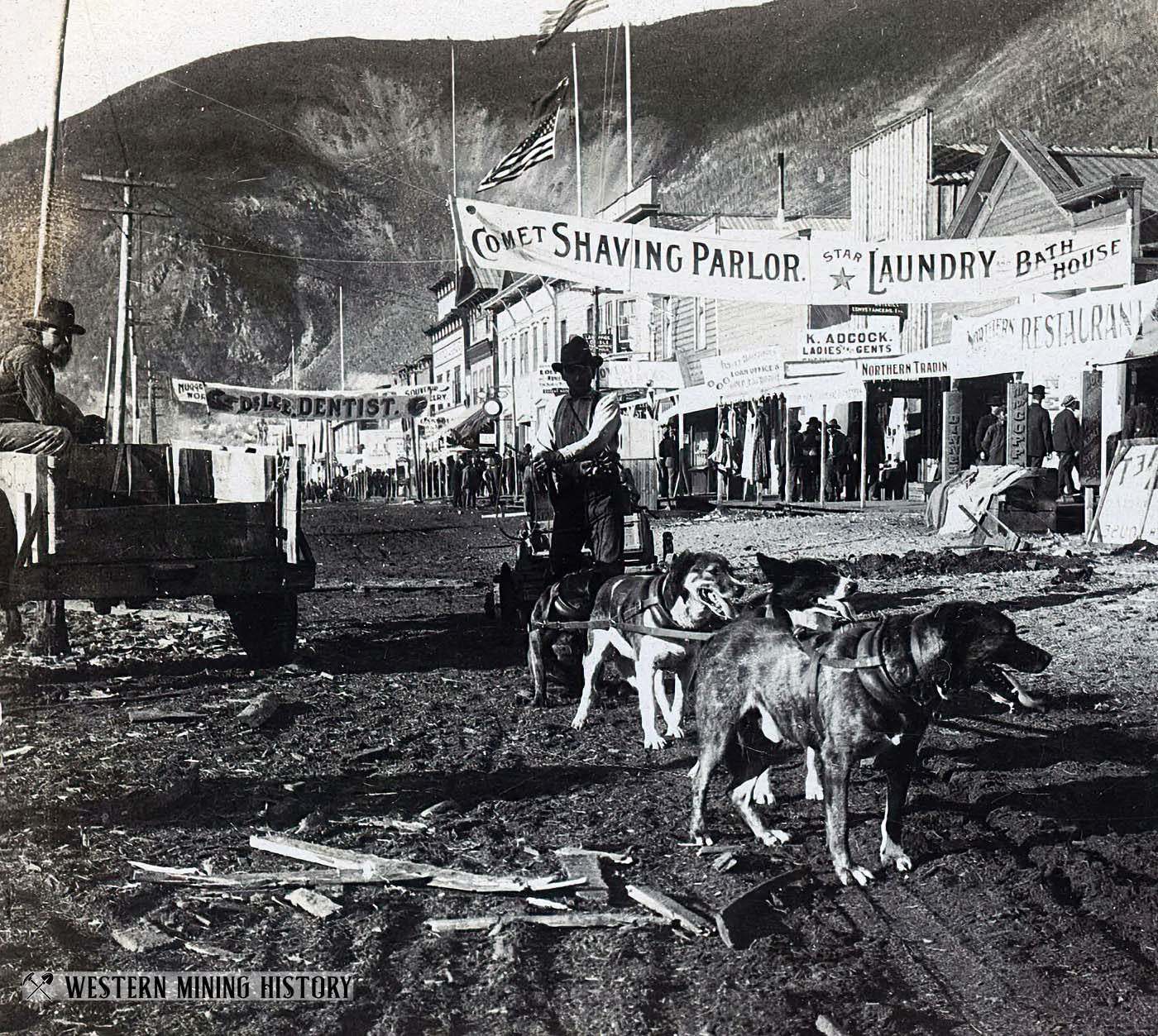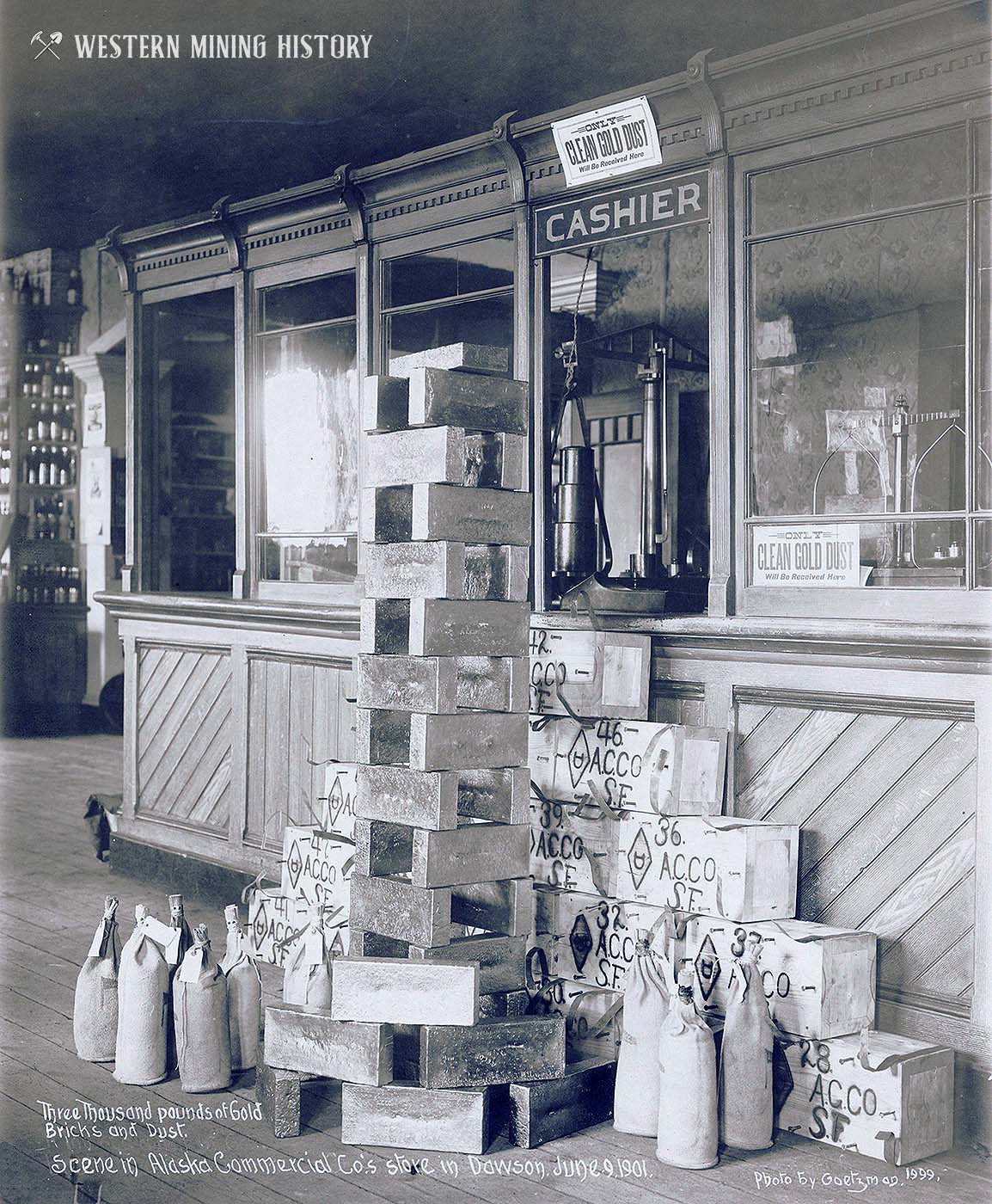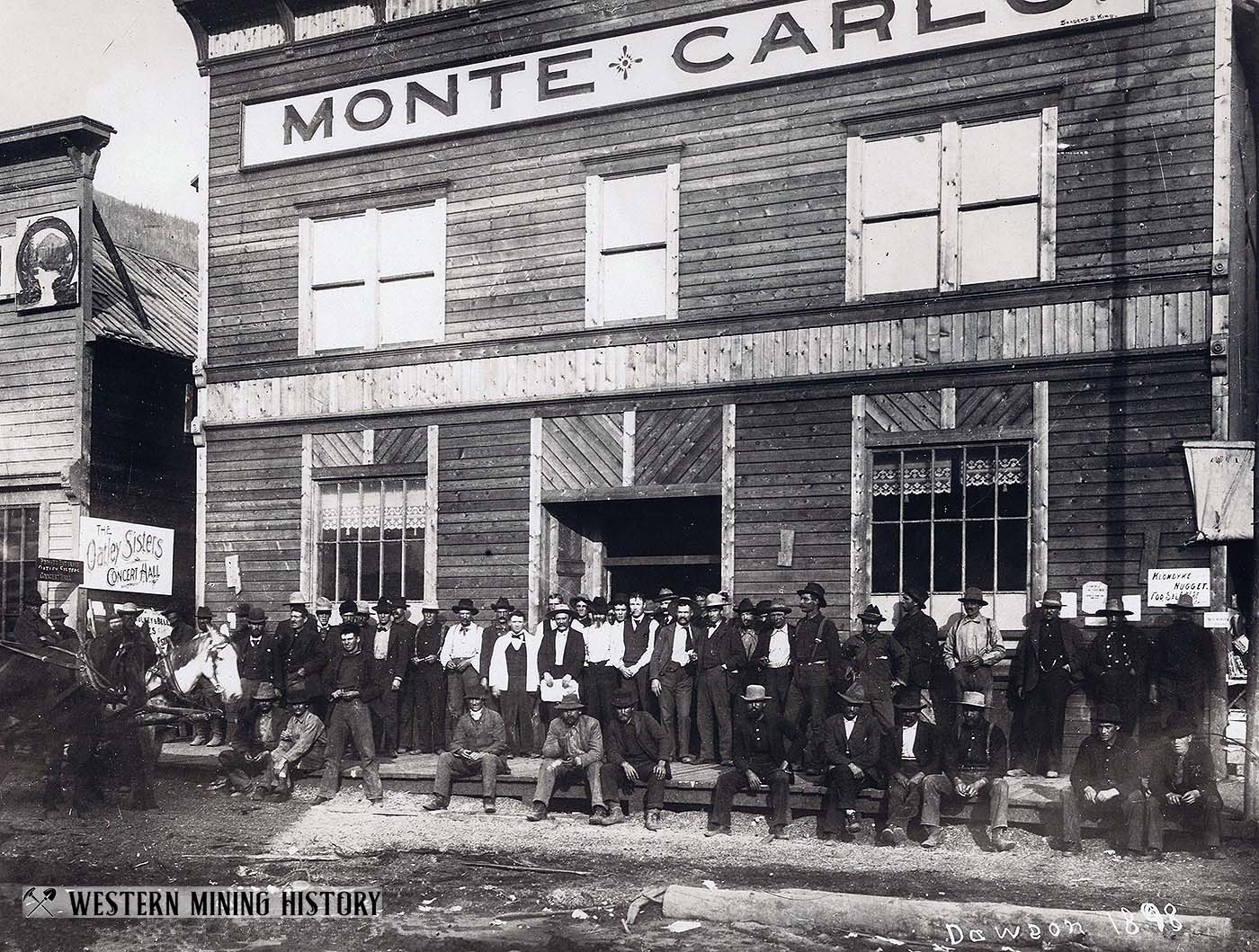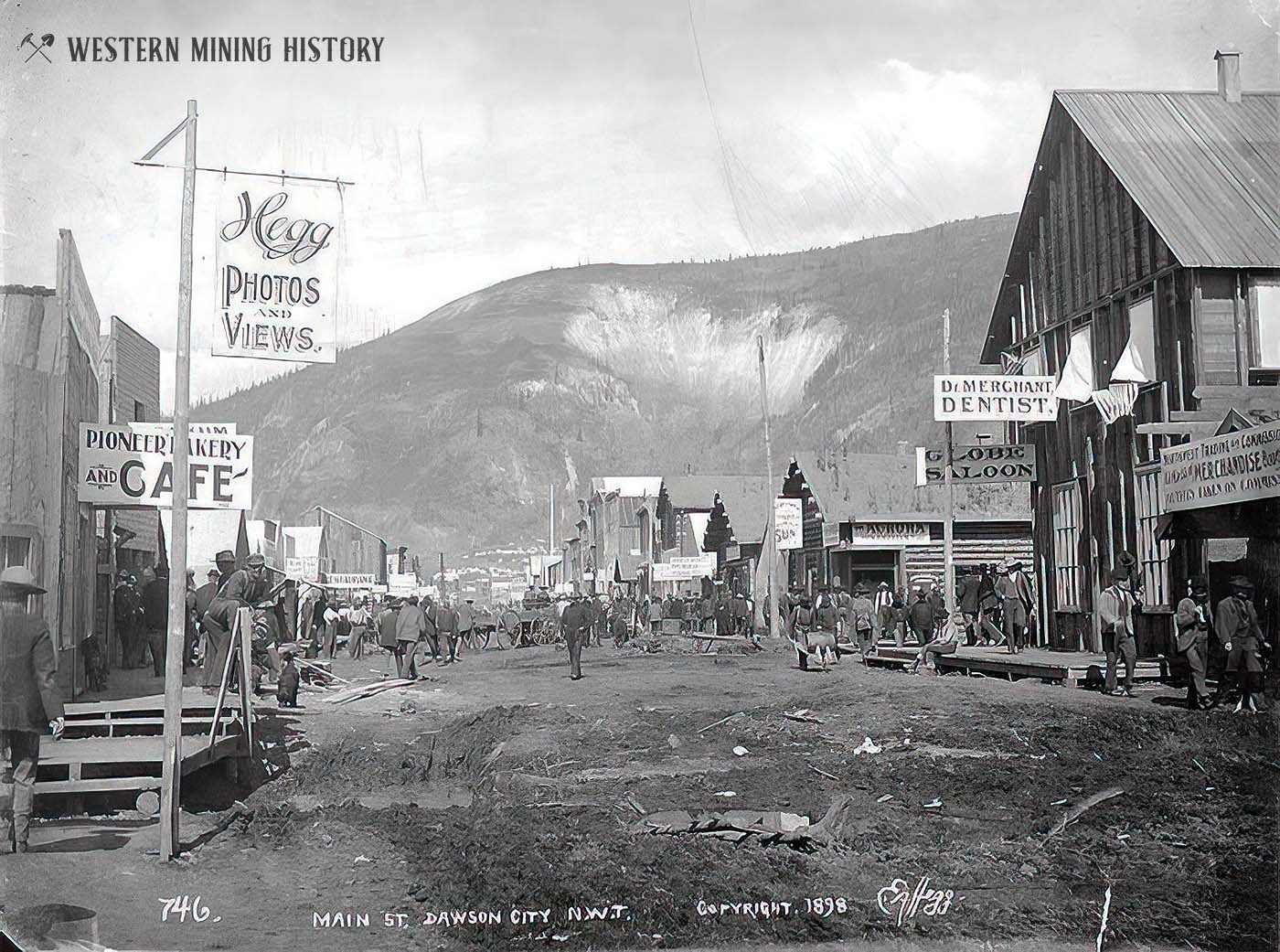Dawson City History
Gold was discovered on the Klondike River, not far from the future site of Dawson City, in 1896. Anticipating a gold rush to the area, trader and prospector Joseph Ladue staked a townsite at the confluence of the Klondike and Yukon rivers in August of that year. The town was named after Canadian geologist George M. Dawson, leader of the expedition that explored the region in 1887.
As news of the gold discoveries spread, a great gold rush began in 1897, reaching its peak the following year. Dawson City rapidly emerged as the central hub for supply and commerce in the Klondike gold fields, drawing an estimated 30,000 to 40,000 people to the region by the summer of 1898. Approximately half of the incoming "stampeders" settled in the booming frontier town, which swelled to an estimated population of around 17,000 at its peak.

The publication The Klondike Stampede of 1897-1898 by Tappan Adney, described Dawson in the fall of 1897:
First, or Main Street, the one skirting the river, sixty feet back from high-water, is practically the only one used. Along this street, beginning towards the barracks, the buildings consist first of a few small earth-covered log dwellings; then several two-story log buildings buildings designated "hotels," with conspicuous signs in front bearing such names as "Klondike," "Dawson City," "Brewery”... then more large houses-the "M. & M." saloon and dance-hall, the "Green Tree" hotel, the "Pioneer" or "Moose-horn" and the "Dominion" saloon, the "Palace" saloon and restaurant and the "Opera-House," built tolerably close together, the space between being filled with tents and smaller cabins used as restaurants, mining-brokers' offices, etc.

On the river's edge, facing this irregular row, are tents, rough buildings hastily constructed out of slabs, scows with tents built over them and warmed by Yukon stoves, and used as offices and restaurants or residences, etc.–a ragged, motley assemblage. In the middle of the road, and evidently built there before the town was surveyed, stands a cabin with one window, the Ladue cabin, the first built in Dawson, and now used as a bakery, when there is anything to bake.
Beyond the saloons is the block of the Alaska Commercial Company, consisting of a corner store, a two-story building, forty by eighty feet, well built of sawn logs, beyond which are three long, low warehouses of galvanized corrugated iron, all on Main Street; and, on a side street, another warehouse and the "mess-house"- a commodious two-story log dwelling for the employés.

The next block is that of the North American Transportation and Trading Company, comprising a store-house similar to that of the other, three corrugated iron warehouses, and a dwelling-house. Beyond this is a sawmill, owned by Harper & Ladue; then more cabins, and at the farther end, half a mile from the stores, the Catholic church and St. Mary’s Hospital, in charge of Father Judge, of the Society of Jesuits, and the Sisters of St. Ann.
Dawson City was the capital of Yukon Territory starting in 1898. Fires destroyed much of the town three times — in 1897, 1899, and again in 1900.

By 1899 the gold rush was over and Dawson City’s population dwindled to around 8,000. By the time the city was incorporated in 1902, the population had fallen to just 5,000. After World War II, the town's resilience was tested when the Alaska Highway was built over 300 miles to the south, bypassing the town and contributing to the loss of the territorial capital to Whitehorse. Less than 1,000 people called Dawson City home during the 1960s and 1970s.
With gold at all-time high prices in recent years, Dawson City has made a rebound as a mining center. Currently over 1,500 people call the town home.
